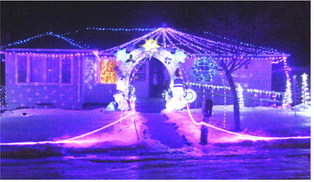Rural Teachers Gather Ideas To Bring Home To Montana Schools
As she looked ahead to starting her teaching career this fall in her home an hour’s drive north of Billings, Savanna Wolff was also looking for opportunities to strengthen her skills in science and other STEM fields. So she jumped at the chance to work alongside educators in a summer research program at Montana State University.
As one of nine elementary teachers participating in MSU’s six-week Research Experience for Teachers program, including others from small towns such as Ashland and Cut Bank, Wolff has spent three days per week contributing to a real research project in MSU’s Norm Asbjornson College of Engineering while going on fields trips, exchanging lesson ideas with other teachers and more.
“It has been a great experience,” said Wolff, a Roundup native who earned her bachelor’s in education from MSU last spring and will begin teaching fourth grade at Roundup Elementary School next month. “As a new teacher, it has been super valuable and has made me more confident on my science and engineering knowledge.”
The program is designed to give teachers hands-on research experience that can expand their view of opportunities in STEM careers, as well as spark ideas for creative lessons they can bring back to their classrooms, explained program leader Paul Gannon, professor of chemical and biological engineering. This summer marks the second of the three-year program, which is backed by a $600,000 grant from the National Science Foundation.
“The program fosters a collaborative ecosystem among elementary educators, MSU, industry and their communities to help build the future STEM workforce,” Gannon said. “Working with and learning from these excellent teachers has been super inspirational, educational and fun.”
Wolff worked alongside Mandie Steele, a teacher from Polson, in the lab of chemical engineering professor David Hodge, whose research focuses on processing biomass such as corn stover — the plant waste left after corn is harvested — into biofuels and other useful materials. She said that before the program, she had no idea that was something engineers were involved in.
“Especially in rural towns, I think students can have a pretty narrow view of what science and engineering are,” Wolff said. “Learning handson about what’s happening in these labs has opened my eyes and made me aware of the opportunities that my future students could have.”
Jeremy Wells, who teaches fourth grade at Napi Elementary School in Browning, worked on research in the lab of Sarah Morris, assistant professor in the Department of Mechanical and Industrial Engineering. The work included making a model airplane wing with a 3D printer and then using specialized imaging techniques to see its aerodynamic properties. He said the experience was giving him ideas for handson activities in the class that could engage his students and help them connect science and engineering principles with the world they see around them.
“This program has really opened up new avenues for how to teach lessons, where I am not just standing at the board talking to students,” said Wells, who recently earned his Master of Education in curriculum and instruction from MSU.
Besides giving teachers new tools for teaching science, technology, engineering and math, the program is also structured to help them fulfill the Indian Education for All curriculum, Montana’s constitutional requirement to teach the cultural heritage of American Indians, noted Gannon, who is an affiliate faculty member of MSU’s Montana Engineering Education Research Center, or MEERC.
The teachers met with tribal members and exchanged ideas during weekly workshops about how to incorporate IEFA into their classrooms. Several of the participants are tribal members, including Wells, an enrolled member of the Blackfeet tribe, and they share their perspective with other teachers in the program.
Kelly Silk, who teaches first grade at Longfellow Elementary School in Great Falls, worked in the lab of Chelsea Heveran, assistant professor of mechanical engineering, doing research about the structural properties of bone. She said she was making lasting connections with other teachers and reinvigorating her energy for teaching in the process.
“As teachers, we’re excited to share ideas and take them back into our classrooms. This has been a great opportunity to collaborate,” said Silk, an enrolled member of the Standing Rock Sioux Tribe whose classroom has a large proportion of Indigenous students. “I’m going to take these friendships back with me.”
Participants, which included two MSU undergraduates studying to become teachers, are encouraged to take what they learn in the lab and create lesson plans for their students.
They shared their research experiences and curriculum ideas with dozens of teachers from across the state at the annual STEM Summer Institute conference hosted at MSU.
Sweeney Windchief, associate professor of education in MSU’s College of Education, Health and Human Development, is advising the program on including Indigenous perspectives, while Rebekah Hammack, assistant professor of education, Nick Lux, associate professor of education, and Abigail Richards, head of the chemical and biological engineering department, are co-leading the project. Suzi Taylor, director of MSU’s Science Math Resource Center, is the project coordinator. Participants receive a $6,000 stipend and help with travel costs, and housing and meals are provided.
Silk said she would recommend the program to other teachers. “It has been a really fun experience,” she said. “It brings that passion back for teaching.”
Other participating teachers and where they teach are Brenda Clouser, St. Ignatius; Leric Eaton, St. Labre; Hilary Lozar, Ronan; Paula Richards, Hardin; and Nathan Ziegler, Cut Bank. The undergraduate participants are Summer Johnston of Salish Kootenai College and Allison Stevens and Mia Troska of MSU.
